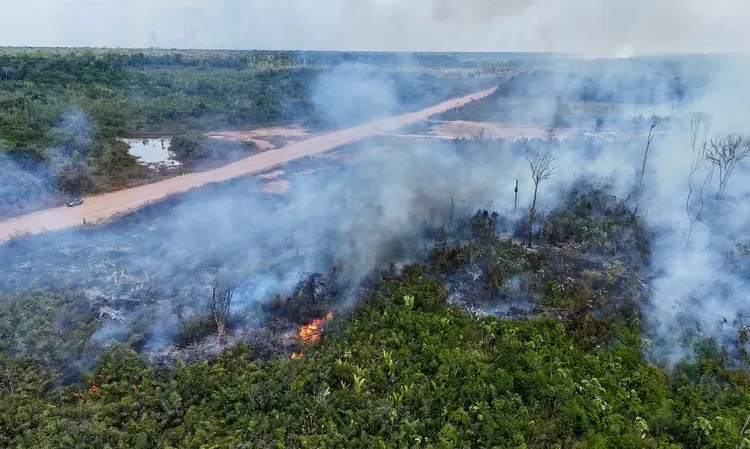Fire consumed 849,521 hectares of undesignated public land in the Amazon rainforest from January to August 2024. This represents a 175% increase compared to last year, when these areas lost 308,570 hectares to the flames. The Fire Monitor released the data on Thursday (12), an initiative coordinated by the Amazon Environmental Research Institute (IPAM, in Portuguese) within the MapBiomas network. The platform uses satellite images to identify fire hotspots.
Undesignated public lands are areas under the responsibility of state or federal governments that have not yet been transformed into settlements, Conservation Units (UCs), or other protected territories, such as Indigenous Lands (TIs) and Quilombola Territories (TQs). When public lands are allotted or registered without authorization from the competent authorities, these locations become the main targets of land grabbing.
“Fire is a complement to deforestation. You cut down the forest and must set it on fire. And deforestation is the main instrument of land grabbing,” explains Maurício Torres, a professor at the Federal University of Pará (UFPA, in Portuguese). By law, these lands must be used for conservation, Indigenous occupation, or the sustainable use of their resources, especially by original and traditional populations.
According to IPAM data, around 50% of deforestation in the Legal Amazon occurs on public land. Two-thirds of deforestation on public lands in the Amazon is in areas with fraudulent Rural Environmental Registration (CAR).
Considering the proportion of the area affected by the flames, TIs were the most devastated in the first eight months of the year. Compared to 2023, when 937,148 hectares were burned during this period, there is a 39% increase in Indigenous territories burned in 2024, with 1,300,646 hectares affected this year.
Next are private rural properties with CAR and SIGEF (Land Management System), which burned 23% of the area in the biome from January to August this year. These properties burned 696,586 hectares in 2023 and 1,233,888 hectares this year, an increase of 77%.
“To reduce fires in these areas, it is essential to reduce the use of fire on private rural properties, which also have a large area burned, and to combat the criminal use of fire on public lands,” says Ane Alencar, IPAM’s science director.
Burnt forest area increased by 132% in August
In August 2024 alone, fire consumed 685,829 hectares of forest in the Amazon – the highest concentration of fires in the month in five years. In the same month last year, 295,777 hectares were burned. In August 2019, the figure was 207,259 hectares. This type of native vegetation, which once represented 12% of the biome’s burnt area in August 2019, now accounts for 34% of everything that caught fire in the region, according to IPAM.
“Usually, burn-offs are mainly recorded this month in agricultural areas, especially pastures,” explains Alencar. The expansion of forest fires indicates the impact of the climate crisis on the biome. “This year, it seems that the climate has impacted this trend, unfortunately, leaving forests more flammable and susceptible to fires,” she says.




